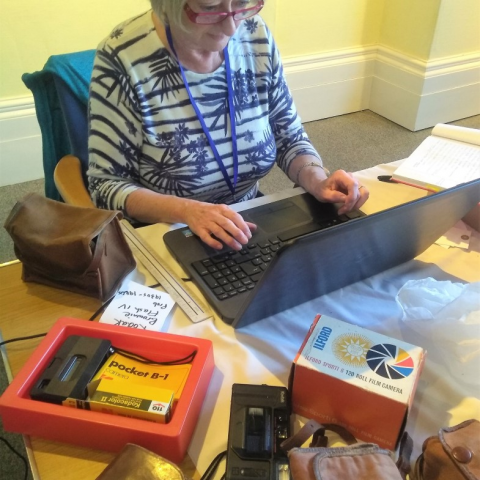Collections Documentation Project
By Charlotte Burford
15/05/2020
In 2019 Littlehampton Museum embarked on a large project to fully digitise and catalogue its vast collection. This project will mean that for the first time the collection will be fully searchable and will make so much more of the collection available to the public. Read below to find out more about the Documentation Project

Like many museums, Littlehampton Museum was facing a significant backlog in its Documentation.
Documentation Backlogs can exist in museums for number of reasons. Many collections donations are given in bulk, this can mean that small museums are not able to give time and resources to cataloguing them straight away and they can get left until the right resources are available. Significant staff changeover can also have an effect as knowledge is lost and new staff get up to speed, and as ever the changing priorities of the sector as a whole have a big effect. Documentation is a key aspect of what a Museum does and is vitally important.
For Littlehampton Museum the Documentation Backlog was historic. With the Museum having moved buildings several times and with the small team unable to keep up there remained a significant backlog of objects that were not catalogued. The Museum estimated that it had over 30,000 objects but an accurate number was not possible without a full inventory of the collection. As this was investigated further it became clear that the backlog was much larger than originally thought.
The Documentation that does exist is a paper-based index card system that lists many of the objects, categorised in two ways to aid searching. However, this system lacks accurate location information to help the searcher locate the object and in many cases it also lacks key information about the object such as provenance or date. It showed that a great deal of work needed to be done to get the collections documentation up to scratch.
With the advent of digital technology came new systems specifically designed for museums, and this is now what the Museum is moving towards. We use a cataloguing system called Modes which allows us to enter in all the information we need to ensure we meet museum sector standards. The Documentation process is a slow and arduous one, but it is important that this is done thoroughly and correctly, or else we risk creating yet more documentation problems in the future.
We work methodically to catalogue each object ensuring that we record several key pieces of information about each object. These include:
Object name
Museum Number – every object should have its own unique number
Number of objects (if part of a group)
A photograph or scan of the object to aid identification and record its condition
The objects location within the Museum or Stores
Donor information: who gave the object – does the Museum own it?
Recorder name and date
Throughout 2019 the Museum team added over 7000 new records to the modes system and edited and updated 1000s of old records – all of which is helping to add to the final total. There are now over 21,000 objects recorded on our digital database and this number continues to grow.
In order to progress the project further we are now looking at new ways to do this, as well as digitising the old paper accession registers to help give a more accurate idea of how big the backlog really is. Despite the huge achievements by the Museum staff and volunteers, there is still a great deal more to do and the project will continue throughout 2020 and 2021.